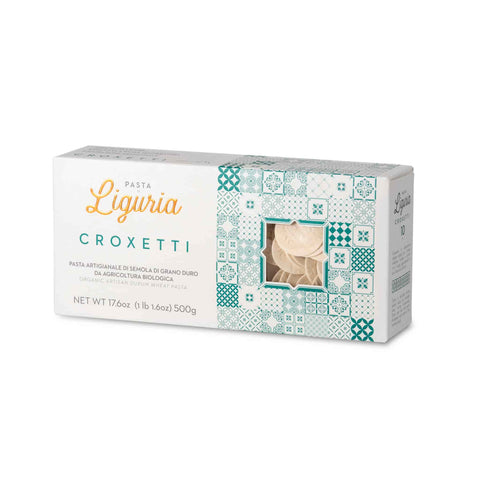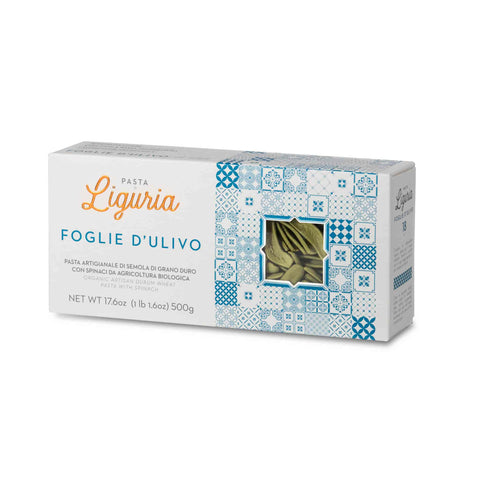Pasta Shapes Local to Liguria, Italy

Pasta shapes in Italy vary across different regions due to a combination of historical, cultural, and geographical factors. Each region has developed its own unique pasta shapes based on local traditions, available ingredients, and preferred cooking methods. Italy's diverse landscape, ranging from coastal regions to mountainous areas, has played a significant role in shaping regional cuisines and pasta traditions.
Learn more about different Italian dried pastas, or read our guide to the best pasta sauces.
SHOP dried Italian pasta.
What makes Ligurian pasta different?

Liguria, a region known for its coastal towns and picturesque landscapes, has its own distinct pasta culture. Ligurian pasta shapes reflect the region's agricultural resources and culinary heritage. Ligurian cuisine heavily features fresh herbs, vegetables, and seafood, and the pasta shapes are often designed to complement these ingredients.
What makes Ligurian pasta special is not only its unique shapes but also the way it is traditionally paired with specific sauces and ingredients. For example, trofie, a twisted pasta shape, is often served with pesto sauce made from local basil, pine nuts, garlic, and Parmesan cheese.
Additionally, Liguria's pasta shapes, such as pansotti and corzetti, often incorporate regional ingredients like Swiss chard, spinach, and chestnut flour. These ingredients add a distinct flavour profile to the pasta, making it a true representation of the region's culinary identity.
Different Ligurian Pasta Shapes and their pairings
Trofiette are miniature versions of trofie. They have the same twisted shape but are smaller in size. Trofiette is also commonly enjoyed with pesto or other Ligurian sauces.
Trofie is a type of short, twisted pasta made from durum wheat flour and water. It has a distinctive helical shape and is often hand-rolled. It is commonly served with pesto sauce, green beans, and potatoes.
Pairs well with: Pesto, specifically Genovese pesto which is local to Genoa (Liguria's capital city)
Corzetti, also known as croxetti, are round, flat discs of pasta with intricate patterns imprinted on them using a special wooden stamp. They are traditionally served with a simple olive oil and pine nut sauce or pesto.
Pairs well with: Simple sauces such as olive oil and herbs.
Bucatini is a long, hollow pasta shape that resembles thick spaghetti with a hole running through the center. It is commonly used in various pasta dishes in Liguria, including the classic dish "bucatini alla genovese" which features a sauce made with onions, carrots, and beef.
Pairs well with: bucatini alla genovese
Signorine Alle Castagne: Signorine alle castagne, also known as chestnut lady pasta, is a type of pasta made with chestnut flour. It is typically shaped like small shells or tubes. This unique pasta pairs well with creamy sauces, such as mushroom or cheese-based sauces.
Pairs well with: Creamy cheese or mushroom based sauces
Foglie D'ulivo: Foglie d'ulivo translates to "olive leaves" in English. This pasta shape is flat and has a distinctive shape resembling olive leaves. It is often served with light sauces, such as olive oil, garlic, and herbs.
Pairs well with: Light sauces
Taglierini: Taglierini is a type of pasta similar to tagliatelle but thinner. It is typically served with delicate sauces, such as butter and sage or seafood-based sauces.
Pairs well with: Delicate sauces
These are just a few examples of the pasta shapes that are local to the Liguria region in Italy. Each shape has its own unique characteristics and is typically paired with specific sauces or ingredients that enhance its flavour.
Learn more about different Italian dried pastas, or read our guide to the best pasta sauces.








